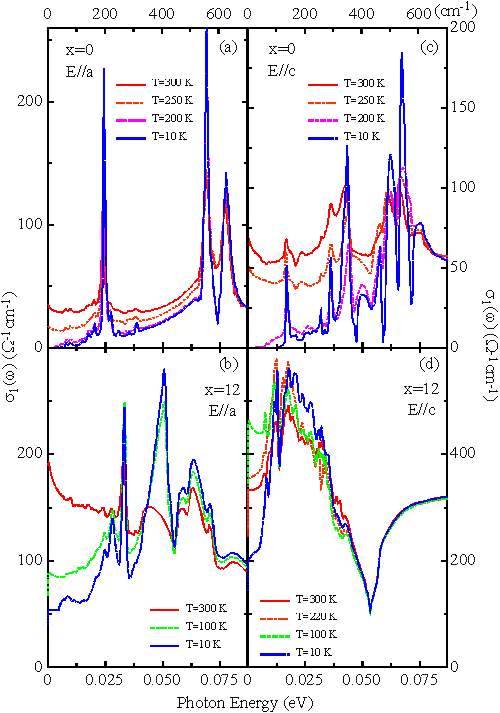Ladder systems
Optical properties of the two-leg Cu2O3 ladders
Sr14-xCaxCu24O41 (x = 0, 5 and 12)

Recently, so-called spin-ladder systems have attracted many researchers' attention. They consist of even or odd numbers of antiferromagnetic one-dimensional (1D) Heisenberg chains (legs) which are connected by rungs. A finite energy gap was predicted theoretically for a magnetic excitation in the even-leg ladder system from S = 0 spin singlet ground states to S = 1 triplet states. A more exciting prediction is the appearance of "d-wave" superconductivity in an even-leg ladder system doped with hole carriers. According to various calculations for the two-leg spin ladder, it is energetically favourable at low temperature for carriers to form singlet pairs leading to superconductivity or charge-density-wave (CDW) states. Separation between spin and charge would occur in such a system, and the gap for spin excitation survives for a certain range of doping level but that for charge excitation vanishes, resulting in a magnetically correlated metallic phase. A member of the ladders' family is the system Sr14-xCaxCu24O41, which is composed of two-leg Cu2O3 ladders and edge-sharing CuO2 chains. Optical measurements are presently underway for x = 0, 5 and 12 (Fig. 4.1).
